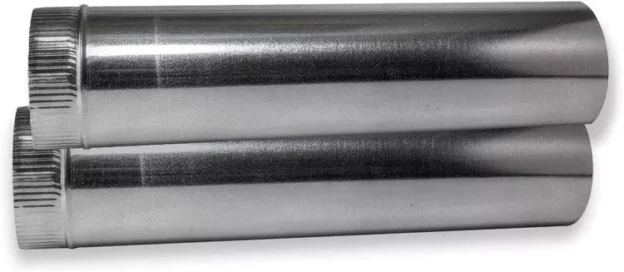In today’s fast-paced world, we rely heavily on household appliances to simplify our daily chores. Among these, the dryer stands as an essential component in ensuring our laundry is clean, dry, and ready to use. However, a common yet often overlooked issue lies within the choice of materials used for dryer vent installations. PVC, a widely used plastic material, has gained popularity for its versatility and affordability. Nevertheless, it poses serious risks when used as a conduit for dryer vents. In this article, we will delve deeper into why PVC is not conducive for dryer vents, focusing on the negative effects it has on airflow and lint accumulation.
1. Understanding the Problem:
The primary concern with PVC dryer vents lies in the static electricity generated by the plastic material. As lint travels through the PVC pipe, the static charge attracts and clings to the pipe’s inner walls, resulting in a significant reduction of the pipe’s diameter over time. What initially starts as a 4″ pipe opening can gradually shrink, leading to poor airflow and a host of drying exhaust issues.
2. The Implications of Poor Airflow:
One of the most significant consequences of reduced airflow is prolonged drying times. When the vent system fails to expel moist air efficiently, the drying process becomes less effective, resulting in damp or partially dry clothes. This inefficiency not only wastes time but also leads to higher energy consumption, as the dryer must work harder and longer to achieve the desired results.
Moreover, reduced airflow can increase the risk of overheating within the dryer. When hot air cannot escape efficiently, it can build up inside the machine, potentially causing damage to its internal components or even leading to a fire hazard. Therefore, maintaining proper airflow is vital for the safe and efficient operation of your dryer.
3. The Perils of Lint Accumulation:
Another critical issue arising from PVC dryer vent installations is the accumulation of lint along the pipe’s inner walls. Lint, consisting of tiny fibers released from clothing during the drying process, is highly flammable and poses a significant fire risk when allowed to accumulate. When lint adheres to the sides of PVC pipes due to static electricity, it creates the perfect fuel for a potential dryer fire.
Moreover, lint accumulation can obstruct the airflow even further, exacerbating the drying issues caused by the reduced diameter of the pipe. This double threat of poor airflow and lint buildup not only compromises the functionality of your dryer but also jeopardizes the safety of your home.
4. Safer Alternatives:
To mitigate the risks associated with PVC dryer vents, it is crucial to consider safer alternatives. Flexible aluminum or rigid metal ducts are widely recognized as superior options for venting dryers. These materials not only resist the buildup of static electricity but also maintain their shape and diameter over time, ensuring optimal airflow and reducing the risk of lint accumulation.
Furthermore, regular maintenance and cleaning of dryer vents are essential to prevent lint buildup and maintain efficient airflow. Periodically inspecting and removing any lint deposits inside the ducts can significantly reduce the fire risk and enhance the overall performance of your dryer.
Conclusion:
While PVC may be a versatile material for various applications, it is ill-suited for dryer vent installations. The static electricity generated by PVC pipes causes lint to cling to the inner walls, resulting in reduced airflow and lint accumulation. These issues can lead to prolonged drying times, increased energy consumption, potential overheating, and heightened fire hazards. By opting for safer alternatives such as flexible aluminum or rigid metal ducts, homeowners can ensure efficient airflow and minimize the risk of lint-related dryer fires. Remember, prioritizing the safety and functionality of your dryer vent system is crucial for a hassle-free laundry experience and a secure home environment.
